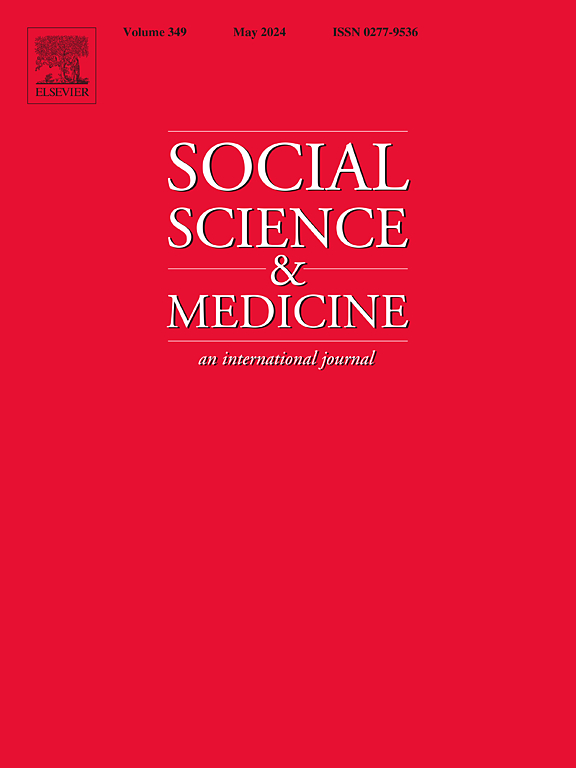宏观层面结构性歧视与酒精后果之间的关系:一项系统综述。
IF 5
2区 医学
Q1 PUBLIC, ENVIRONMENTAL & OCCUPATIONAL HEALTH
引用次数: 0
摘要
饮酒是导致死亡和残疾的一个主要风险因素,对弱势群体的伤害尤为严重。虽然人际歧视与饮酒之间存在正相关关系,但结构性歧视的影响仍不清楚。我们对宏观层面结构性歧视与酒精消费或相关健康结果之间的关系进行了系统回顾。我们检索了4个数据库和灰色文献,确定了25个符合条件的研究,涉及种族主义(n = 11)、性别歧视(n = 7)、异性恋歧视(n = 4)和交叉歧视(n = 3)。大多数人考虑饮酒(n = 17);较少涉及危害(n = 4)或两者(n = 4)。大多数研究来自美国(n = 21),其中4个进行了跨国比较。关联因歧视类型、暴露测量、酒精结局和社会人口因素而异,但社会人口因素的差异影响仍未得到充分研究。大多数结构性种族主义研究将种族隔离视为暴露因素,但即使按结果分组,研究结果也不一致。新出现的证据表明,基于种族的贫困率和监禁差距的增加与更高的消费和伤害有关,特别是对黑人和西班牙裔人口而言。结构性性别歧视的研究通常使用综合指标,如国家级性别不平等指数。有证据表明,随着性别平等程度的提高,女性更有可能饮酒,而更严重的结构性性别歧视可能与高风险饮酒和酒精相关死亡率的上升有关。关于重度间歇性饮酒和饮酒频率的研究结果好坏参半,而与饮酒量和数量的关系大多不显著。有限的现有证据表明,在性少数群体中,结构性异性恋可能与高强度饮酒和酒精使用障碍呈正相关。多种形式的结构性歧视同时产生的影响仍未得到充分探讨。推进这一领域需要就如何在酒精研究中实施结构性歧视达成共识,并更多地采用交叉和纵向方法。本文章由计算机程序翻译,如有差异,请以英文原文为准。
The association between macro-level structural discrimination and alcohol outcomes: A systematic review
Alcohol consumption is a major risk factor for death and disability, disproportionately harming disadvantaged groups. While a positive association between interpersonal discrimination and alcohol use is established, structural discrimination's impact remains unclear. We conducted a systematic review of the association between macro-level structural discrimination and alcohol consumption or related health outcomes. We searched four databases and grey literature, identifying 25 eligible studies, which considered racism (n = 11), sexism (n = 7), heterosexism (n = 4), and intersectional discrimination (n = 3). Most considered alcohol consumption (n = 17); fewer addressed harm (n = 4) or both (n = 4). The majority were US-based (n = 21), with four making cross-country comparisons. Associations varied by discrimination type, exposure measurement, alcohol outcome, and sociodemographic factors, though differential effects by sociodemographic factors remain understudied.
Most structural racism studies considered segregation as the exposure, but findings were inconsistent, even when grouped by outcome. Emerging evidence suggests increased race-based poverty ratios and incarceration gaps are associated with higher consumption and harm, especially for Black and Hispanic populations. Studies of structural sexism often used composite measures, like state-level gender inequality indices. Evidence suggests that as gender equality increases, women are more likely to drink, while greater structural sexism may be linked to higher rates of risky drinking and alcohol-related mortality. Findings on heavy episodic drinking and drinking frequency were mixed, while associations with volume and quantity were mostly non-significant. The limited available evidence suggests structural heterosexism may be positively associated with high intensity drinking and alcohol use disorders among sexually minoritized groups. The simultaneous impact of multiple forms of structural discrimination remains underexplored. Advancing this field requires consensus on how to operationalize structural discrimination within alcohol studies and greater adoption of intersectional and longitudinal approaches.
求助全文
通过发布文献求助,成功后即可免费获取论文全文。
去求助
来源期刊

Social Science & Medicine
PUBLIC, ENVIRONMENTAL & OCCUPATIONAL HEALTH-
CiteScore
9.10
自引率
5.60%
发文量
762
审稿时长
38 days
期刊介绍:
Social Science & Medicine provides an international and interdisciplinary forum for the dissemination of social science research on health. We publish original research articles (both empirical and theoretical), reviews, position papers and commentaries on health issues, to inform current research, policy and practice in all areas of common interest to social scientists, health practitioners, and policy makers. The journal publishes material relevant to any aspect of health from a wide range of social science disciplines (anthropology, economics, epidemiology, geography, policy, psychology, and sociology), and material relevant to the social sciences from any of the professions concerned with physical and mental health, health care, clinical practice, and health policy and organization. We encourage material which is of general interest to an international readership.
 求助内容:
求助内容: 应助结果提醒方式:
应助结果提醒方式:


